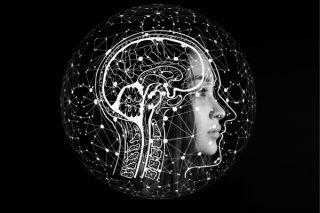Unpacking Social Anxiety: A Complete Guide to Its Causes
Ever wonder what causes social anxiety? This guide explores the complex interplay of genetics, environment, and biology behind social anxiety disorder.

What Causes Social Anxiety Disorder?
Social Anxiety Disorder (SAD), characterized by intense fear and avoidance of social situations due to apprehension of judgment or embarrassment, affects a significant portion of the population. If you've found yourself asking what causes social anxiety, you're exploring a critical question. The truth is, there isn't a single culprit; rather, it’s a multifaceted condition stemming from a complex interplay of genetic predispositions, environmental factors, and biological mechanisms within the brain. Understanding these roots is the first step toward effective management and support.
Why Understanding the Causes Matters
Delving into the origins of social anxiety is more than just academic curiosity. Knowing what causes social anxiety can empower individuals and their loved ones to better understand the condition, reduce self-blame, and most importantly, guide the selection of the most effective treatment strategies. Whether it's therapy, medication, or lifestyle adjustments, a tailored approach often begins with identifying contributing factors.
The Intertwined Roots: What Causes Social Anxiety?
Social anxiety disorder typically emerges from a combination of influences, rather than one isolated event or trait. Researchers from leading psychological institutions agree that a holistic view is essential when exploring the factors behind social anxiety.
Genetic Predisposition: Is It in Your DNA?
Many studies indicate a strong genetic component to social anxiety disorder. If you have a first-degree relative—a parent or sibling—who experiences SAD, your likelihood of developing the condition can increase significantly, sometimes by two to six times. This suggests that certain genes make individuals more prone to developing the disorder.
Heritability refers to the proportion of variation in a trait or characteristic (like social anxiety) that is attributable to genetic differences among individuals. Estimates suggest that between 27% and 56% of the underlying causes social anxiety can be linked to genetic factors.
While specific genes directly responsible for SAD haven't been definitively isolated, research continues to identify genetic links to broader anxiety disorders, such as panic disorder, hinting at a shared genetic vulnerability across the anxiety spectrum.
Environmental Influences: How Experiences Shape Us
Beyond genetics, the environment in which an individual grows up plays a crucial role in shaping their susceptibility to social anxiety. Psychosocial factors and learned behaviors can significantly contribute to why social anxiety develops.
Children can learn social anxiety through various mechanisms:
- Direct Conditioning: A particularly humiliating or embarrassing experience in a social setting can be a powerful trigger. For instance, a child who performs poorly in a school play and is openly ridiculed by peers might develop a lasting fear of public speaking or performance situations. This early traumatic event, though not always present, can leave a significant impact.
- Observational Learning: Witnessing someone else endure a traumatic or embarrassing social situation can be just as impactful as experiencing it firsthand, especially for those already vulnerable. A child who sees a friend constantly teased for their appearance might internalize a fear of being judged for their own.
- Information Transfer: Parents, often unknowingly, can transfer their own anxieties about social situations to their children. A mother who frequently expresses worries about what others think of her, or avoids social gatherings due to discomfort, might instill similar fears in her child, leading them to believe social interactions are inherently risky.
Upbringing styles can also contribute. A lack of diverse childhood social experiences can hinder the development of essential social skills. Similarly, childhood attachment issues, often arising from overly critical, controlling, or rejecting primary caregivers, can prevent a child from developing healthy self-soothing mechanisms, making them more vulnerable to stress in social settings (Stanford researchers).
Early Temperament: The Role of Behavioral Inhibition
Have you ever observed a young child who consistently reacts to new situations or unfamiliar people with extreme shyness, withdrawal, or distress? This behavior, known as behavioral inhibition, is an early temperament trait that can be a strong predictor of social anxiety later in life.
Children who exhibit behavioral inhibition as toddlers are at a significantly increased risk—up to seven times higher—of developing SAD. Approximately 40% of behaviorally inhibited children later develop the disorder (Harvard, 2024). Given its appearance at such a young age, behavioral inhibition is believed to have strong biological underpinnings.
Early intervention can be incredibly beneficial. If concerns arise about a child's excessive withdrawal or fear in new social contexts, consulting a professional can help mitigate the risk of more severe social anxiety problems in adulthood. Addressing these early signs is a proactive step in understanding what causes social anxiety to persist.
Societal and Cultural Context: Broader Influences
Cultural values and societal norms can also influence the development and expression of social anxiety. In certain collectivistic cultures, such as Japan or Korea, there's a recognized syndrome called taijin kyofusho. This involves a fear of making other people uncomfortable or offending them, rather than solely a fear of one's own embarrassment.
This cultural manifestation highlights how deeply ingrained societal emphasis on group harmony and collective identity can shape the specific anxieties individuals experience. It underscores that what causes social anxiety can also be influenced by the broader cultural lens through which social interactions are viewed.
The Brain's Role: Biological Underpinnings
Modern neuroimaging techniques allow researchers to
About Ava Thompson
NASM-certified trainer and nutrition nerd who translates science into simple routines.
View all articles by Ava Thompson →Our content meets rigorous standards for accuracy, evidence-based research, and ethical guidelines. Learn more about our editorial process .
Get Weekly Insights
Join 10,000+ readers receiving actionable tips every Sunday.

